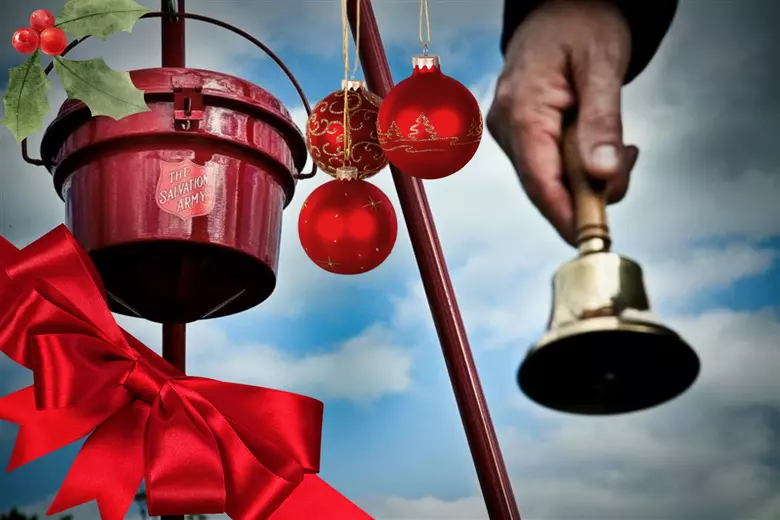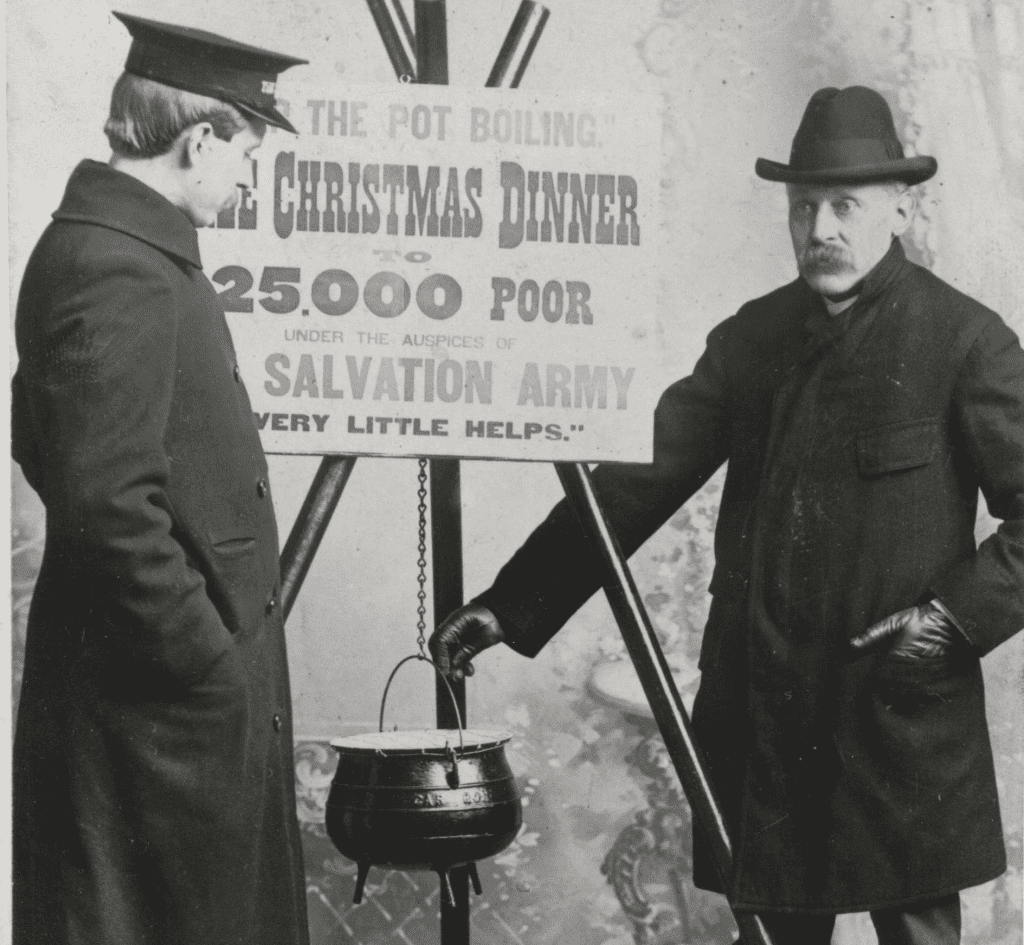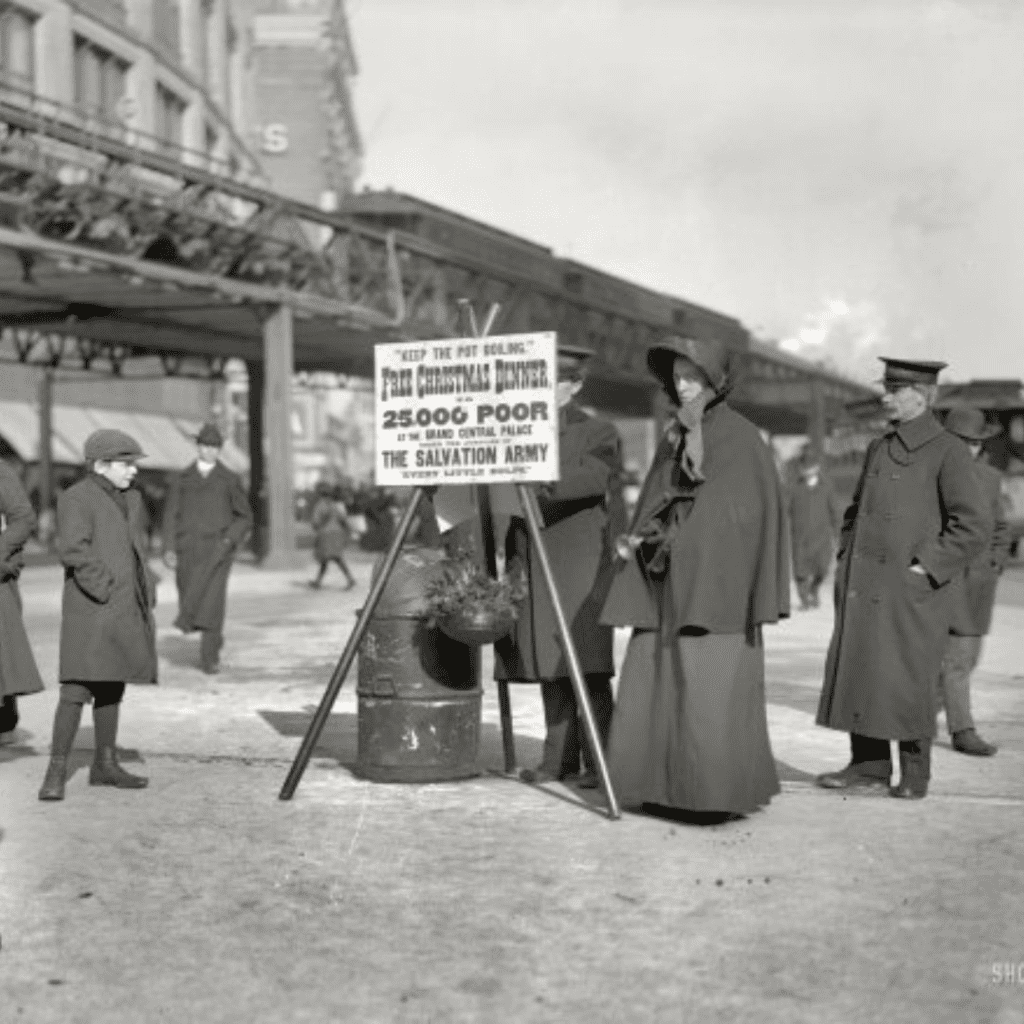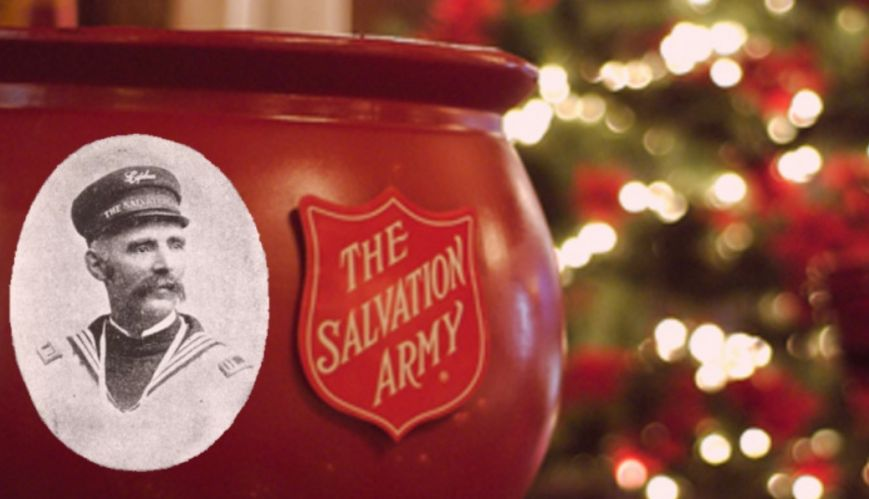In the winter of 1891, a Salvation Army captain named Joseph McFee stood on a wharf in San Francisco and watched ships roll in from distant shores. While the city bustled with activity and commerce, McFee was concerned about something much closer to home the rising number of people going hungry in his community. As Christmas approached, he couldn’t shake the feeling that he needed to do something more. His goal was ambitious: feed 1,000 hungry people a warm Christmas meal.
But there was a problem. He had no money.
Inspired by a childhood memory of a sailor’s kettle at the Liverpool docks in England, where passersby would toss in coins to support the poor, McFee had a simple idea. He set up a crab pot on the side of the street near Oakland Ferry Landing and hung a sign above it that read, “Keep the Pot Boiling.” With hope in his heart, he waited.

A Spark That Caught Fire
To his amazement, people began to stop. Some gave pennies. Others gave nickels and dimes. The donations began to add up, and by Christmas Day, McFee had raised enough to serve his promised feast to 1,000 hungry souls. That single act of kindness, fueled by a rusted kettle and the generosity of strangers, became the spark for a tradition that would travel across oceans and grow into a symbol recognized around the world.

Word of McFee’s success spread quickly through the Salvation Army. Other cities adopted the kettle idea, and before long, it became a fixture in the holiday season across the United States. Volunteers, often dressed in recognizable uniforms and ringing bells, stood beside red kettles outside of stores and public spaces, continuing McFee’s mission to help those in need during the coldest, most challenging time of the year.
Video:
The Salvation Army | Kettle
Spreading Beyond America
By the early 20th century, the red kettle campaign had taken root in Canada. In the decades that followed, it crossed into Europe, Asia, Latin America, and beyond. Today, the Salvation Army’s red kettles can be found in more than 130 countries around the globe. From bustling streets in Tokyo to snowy sidewalks in London and village markets in Africa, the sound of the bell and the sight of the red kettle serve as a reminder that the spirit of giving knows no borders.
The money raised through this campaign supports not only food drives but also housing assistance, addiction recovery, job training, and disaster relief. It helps fund schools, shelters, and counseling centers. And it all started with a man who saw a problem and chose to act with whatever he had—a borrowed kettle and a strong sense of purpose.

More Than Just Donations
What makes the red kettle campaign so powerful is not just the money it collects, but the message it sends. It is a visible, public invitation to do good. In a season often focused on gifts and consumerism, the kettle asks us to look around and care for others. It transforms street corners into stations of hope.
Video:
‘Help rescue Christmas:’ Salvation Army launches Red Kettle Campaign
For many, dropping a coin in the red kettle is a family tradition. Parents teach their children about giving back. Office workers donate spare change on their way to lunch. Some people make it a point to give anonymously every year, inspired by the campaign’s humble origins.
The Legacy of Joseph McFee
Joseph McFee probably never imagined that his effort to feed 1,000 people in San Francisco would grow into one of the world’s most enduring charitable traditions. But his legacy lives on not just in the millions of dollars raised each holiday season, but in the hearts of volunteers who keep the bell ringing year after year.
His story reminds us that change doesn’t always require wealth or grand plans. Sometimes, it begins with a simple question: “What do I have, and how can I help?” McFee’s answer a crab pot and a sign was enough to start a global movement.

A Tradition That Continues to Inspire
Today, more than a century later, the red kettle stands as a quiet symbol of hope and humanity. It reminds us that during the holiday season, the greatest gift we can give is not wrapped in ribbon, but shared through compassion and community.
Whether it’s a few coins or a generous check, every contribution continues the mission Joseph McFee began on a cold dock in San Francisco. And as long as the kettles keep ringing, his spirit lives on warming lives, one donation at a time.


